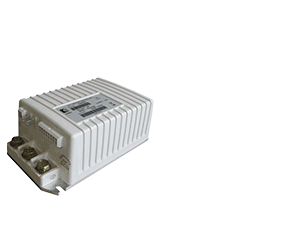Much attention has been directed to the so-called “smart city” in the post-pandemic phase of the economic recovery. (Obviously, the term “post-pandemic” is used guardedly at this point.) Whether or not the pandemic is behind us, cities and municipalities are engaged in a series of adjustments that could have a significant impact on dealers. New opportunities could very well open up for dealers, which is the focus of this article, but as I will contend, dealers will need the right vehicles in stock, and be able to take of advantage of their local presence in their communities, to consummate sales.
First of all, what is a smart city? The aim of a smart city is to reduce its carbon footprint in pursuit of climate change goals. Essentially this means applying green technologies and systems to buildings and transportation. With regard to the latter, a smart transportation system involves traffic management, modes of delivery of people, products, and services, and equitable transportation services to all neighborhoods.
The over-arching objective in urban mobility is to completely ban the internal combustion engine by some given target date. A target date often cited is 2035. This means that only electric-powered vehicles will be allowed into cities by the target date, and usually there are progressive thresholds which must be met.
Spillover effects on suburban and planned communities
So what does this mean for dealers? To put the answer to the question in perspective, the table below enumerates the variety of vehicles, which are suited to meet two basic needs of the emerging urban/suburban mobility (USM) market: 1) Vehicles to move persons; and 2) Vehicles to move goods and services. The role performed and salient characteristics of vehicles in these two categories are also described.
The market has moved well beyond golf related activities and golf-related residential communities. Massive demographic movement, cited below, as well as facilitating technologies underpin significant changes and the market for small, electric-powered vehicles. As a result, major companies are building their participation and any number of newcomers and start-ups have entered the market with significant capital.
Spillover effects in new technologies and mobility services
The last column in the above table describes some of the characteristics and attributes we can expect to see in coming into the gated community market. Technologies such as autonomous driving capabilities would not be developed at this stage for gated communities, the market being too small. This technology is being widely tested, however, in both market categories in urban and nearby suburban markets, is highly likely to be part of the vehicle mix as it spills over into gated and planned communities.
New styles and levels of comfort
While PTVs and utility vehicles have been progressively upgraded to enhance creature comforts and versatility in the workplace, more significant advances in this direction needs to take place to broaden the market. A relatively new entry in the category of PTVs, either as part of a ride-sharing fleet or personally-owned, is the MEV™ Hummer HX™, pictured here.
This model is a fully-enclosed, electric vehicle and meets LSV specifications. MEV is manufactured in the U.K. and distributes worldwide. Its companion model the HXT™ is an open top version of the same vehicle. Note that the doors can be removed for easy entry and exit in golf car mode. Note also that the dimensions of the two models are close to those of the standard PTV: versus the Onward™, 10 inches longer, 9 inches wider, and 14 inches lower. So, a bit larger, but should fit in your PTV garage.
The MEV HXT™ is the open top version of the Hummer is shown below, and, as noted, the doors can be removed, which brings us pretty close to the standard PTV as exemplified by Club Car’s Onward, but with the additional benefits of being completely enclosable (canvas-convertible-type coverage), if desired.
The MEV Hummer comes with many options, including a lithium battery pack that will get you a distance of up to 100 miles. You can go to the company website for further details: https://www.myelectricvehicle.org/mev-hummer-hxt .
The Hummer as a transitional vehicle
Normally, I do not devote so many words to a single brand, but the MEV Hummer just happens to represent, in my view, the quintessential example in today’s market of the next step in personal transportation. It is suitable for all weather driving and fitting nicely in all categories of personal mobility outlined above. (The Hummer also comes in four, front-facing passenger version, the HXT™ Limo, suitable for fleet operations.)
Because the MEV in its three versions is more versatile than the currently available PTVs from the Big Three golf car manufacturers and other brands such as StarEV, Bintelli, and Icon, and is a striking contrast in styling, I believe it will find a sweet spot in the gated community market and in the broader, emerging urban/suburban mobility (USM) market.
Last-mile delivery of goods and services: Another emerging mass market
Last-mile delivery of goods and services is another market where spillover effects will impact the gated community and other forms of clustered residential developments. Here again the concept of transitional vehicles is at play. An example of the typical golf car-type utility vehicle would be the Club Car Carryall models and the UMax line from Yamaha.
The Carryall 710 is shown here and typifies the light duty utility vehicles manufactured by the Big Three and others. Club Car has taken the utility purposed vehicle to another level with a larger, more rugged utility truck, the Club Car 411—which is now marketed as the Club Car Current™. The 411, and its successor the Current, is the result of a collaboration with Ayro, Inc., based in Austin, TX.
The difference between the conventional light duty utility vehicle, built on a golf car-type frame and the Current can be easily observed. The Current is about two and a half feet longer than the 710, but its most compelling feature is the range of purposed cargo configurations that can be installed on the frame. These can be seen below.
Movement out of urban centers portends a change in living styles
Even before the COVID crisis, people were moving out of city centers and into the suburbs and beyond. As a result of the crisis and the attendant incidental rise in crime and general local government mismanagement, this movement has intensified. A recent compilation by the Cleveland Federal Reserve Bank of urban-suburban migration patterns clearly points to this rising trend. For those who want to delve into the numbers, here is the link: https://www.clevelandfed.org/newsroom-and-events/publications/cfed-district-data-briefs/cfddb-20210325-migrants-from-high-cost-large-metro-areas-during-the-covid-19-pandemic.aspx .
There are at least two significant implications of the emigration from urban centers for the market for small, task-oriented vehicles, such as have been featured in this article:
- The movement out of cities are likely to be directed to clustered communities more amenable to small, low-speed vehicles, and at the same time consumers will be looking for versatile systems of electric mobility;
- Work from home, the virtual office, will embrace the convenience of last mile delivery systems, even more than we are seeing today, and will increasingly featuring electric vehicles.
Both aspects of the general demographic trend assure a significant broadening and growth in the small, electric vehicle market.
The opportunity for dealers
The last mile delivery market is burgeoning, as major companies such as Ford and General Motors, as well as start-ups, such as Ayro, are building vehicles for the market. At the same time major retailers, such as Walmart are expanding their delivery services into this space. In parallel with these developments is the expansion of Amazon’s localized delivery centers, designed to reach into neighborhoods to facilitate same day delivery services.
In addition to the above, shop and delivery services, e.g., Instacart, and restaurant delivery services (e.g., DoorDash) operate in a realm where the vehicles used are owned by the contracted employee. What is likely to happen as cities and municipalities move to an all-electric mobility requirement? These much used and expanding companies and others like them will invest in their own electric-powered fleets. The relationship with drivers could be modeled after the trucking industry.
The opportunity for dealers is contingent on two factors:
- Having the right vehicles in stock;
- Shifting the sales effort from the walk-in or local golf course/gated community customer to the commercial segment, consisting of last-mile delivery service providers.
In addition, building a relationship with local transit authorities is likely to be important. There public officials are being increasingly tasked to come up with zero carbon footprint solutions. Electric-powered last-mile delivery vehicles are consistent with this objective. This could lead, in turn, to modifications in public streets and thoroughfares to accommodate low-speed or medium-speed vehicles.
Public-private collaborations in the move toward zero carbon, or carbon-neutral transportation systems, and mobility systems in general, will become increasingly common at the local level—and this is where a dealer’s local presence becomes an important advantage.




















